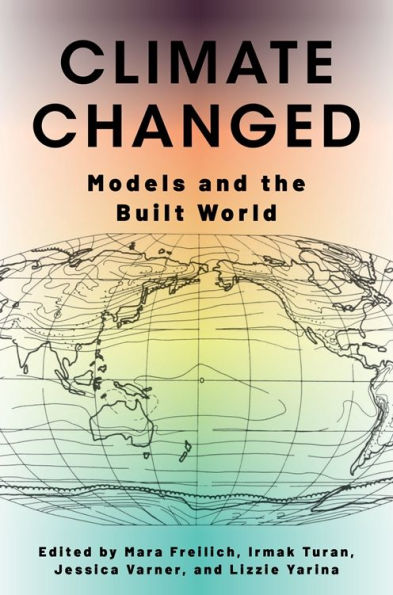Climate Changed: Models and the Built World
Models change our worlds. From global carbon flux models to regional coastal flood prediction maps, climate-related models influence how we know our environment, how we build our cities, and how we act on a climate-altered planet. Yet such models typically require specialized knowledge to navigate, and because the climate crisis is inherently multidimensional, technical expertise in isolation is not enough.
Climate Changed examines models and their imperfect yet central role in understanding the relationship between global climate dynamics and the human-built environment. It compares and synthesizes the methods and function of models in disciplines ranging from architecture and planning to climate science and natural hazards research. This book considers how disparate models are woven together to understand the climate crisis, underscoring the necessity of combining locally situated and transdisciplinary knowledge with climate science to navigate current and future cataclysmic changes. It highlights the challenges and consequences of disciplinary boundaries, siloed scientific knowledge, and uneven data and develops ways to overcome these limitations.
As the world faces the effects of climate change, climate scientists are debating the future of their field; architects, engineers, and planners are designing in the context of climate change; and society at large is grappling with how to take action. This book brings those communities together to chart a path forward.
1147265280
Climate Changed examines models and their imperfect yet central role in understanding the relationship between global climate dynamics and the human-built environment. It compares and synthesizes the methods and function of models in disciplines ranging from architecture and planning to climate science and natural hazards research. This book considers how disparate models are woven together to understand the climate crisis, underscoring the necessity of combining locally situated and transdisciplinary knowledge with climate science to navigate current and future cataclysmic changes. It highlights the challenges and consequences of disciplinary boundaries, siloed scientific knowledge, and uneven data and develops ways to overcome these limitations.
As the world faces the effects of climate change, climate scientists are debating the future of their field; architects, engineers, and planners are designing in the context of climate change; and society at large is grappling with how to take action. This book brings those communities together to chart a path forward.
Climate Changed: Models and the Built World
Models change our worlds. From global carbon flux models to regional coastal flood prediction maps, climate-related models influence how we know our environment, how we build our cities, and how we act on a climate-altered planet. Yet such models typically require specialized knowledge to navigate, and because the climate crisis is inherently multidimensional, technical expertise in isolation is not enough.
Climate Changed examines models and their imperfect yet central role in understanding the relationship between global climate dynamics and the human-built environment. It compares and synthesizes the methods and function of models in disciplines ranging from architecture and planning to climate science and natural hazards research. This book considers how disparate models are woven together to understand the climate crisis, underscoring the necessity of combining locally situated and transdisciplinary knowledge with climate science to navigate current and future cataclysmic changes. It highlights the challenges and consequences of disciplinary boundaries, siloed scientific knowledge, and uneven data and develops ways to overcome these limitations.
As the world faces the effects of climate change, climate scientists are debating the future of their field; architects, engineers, and planners are designing in the context of climate change; and society at large is grappling with how to take action. This book brings those communities together to chart a path forward.
Climate Changed examines models and their imperfect yet central role in understanding the relationship between global climate dynamics and the human-built environment. It compares and synthesizes the methods and function of models in disciplines ranging from architecture and planning to climate science and natural hazards research. This book considers how disparate models are woven together to understand the climate crisis, underscoring the necessity of combining locally situated and transdisciplinary knowledge with climate science to navigate current and future cataclysmic changes. It highlights the challenges and consequences of disciplinary boundaries, siloed scientific knowledge, and uneven data and develops ways to overcome these limitations.
As the world faces the effects of climate change, climate scientists are debating the future of their field; architects, engineers, and planners are designing in the context of climate change; and society at large is grappling with how to take action. This book brings those communities together to chart a path forward.
120.0
Pre Order
5
1

Climate Changed: Models and the Built World
248
Climate Changed: Models and the Built World
248
120.0
Pre Order

Product Details
| ISBN-13: | 9780231217699 |
|---|---|
| Publisher: | Columbia University Press |
| Publication date: | 08/12/2025 |
| Pages: | 248 |
| Product dimensions: | 6.12(w) x 9.25(h) x (d) |
About the Author
From the B&N Reads Blog
